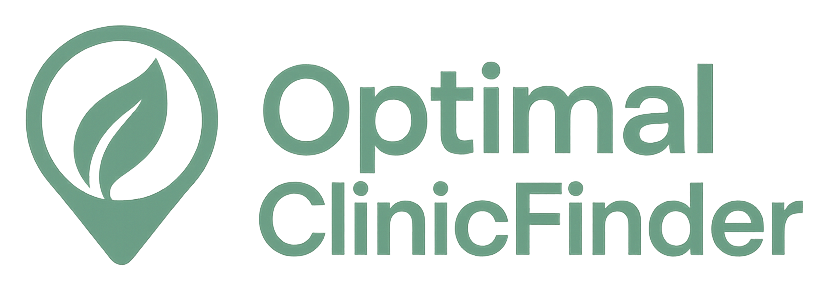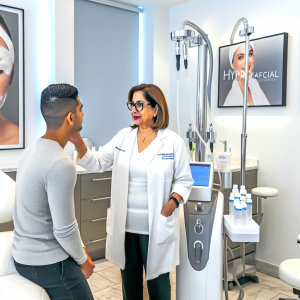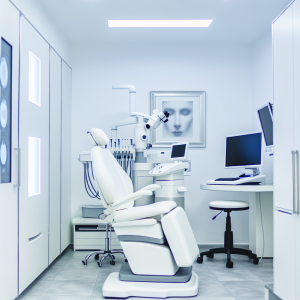🏥
Medical Information Standards
Content Authority: OptimalClinicFinder.com is a comprehensive medical directory platform connecting patients with qualified Pdo Thread Lift providers. Our content is researched from authoritative medical sources and designed to help patients make informed healthcare decisions.
How PDO Thread Lifts Work: Clinical Mechanism and Applications
PDO (polydioxanone) thread lifts represent a breakthrough in non-surgical facial rejuvenation, utilizing biocompatible suture material to achieve both immediate lifting effects and long-term collagen stimulation. The procedure involves strategically placing threads beneath the skin using fine needles or cannulas, creating a supportive mesh that lifts sagging tissue while triggering the body’s natural healing response.
The dual-action mechanism provides immediate mechanical lifting through thread tension and gradual improvement through neocollagenesis. As PDO threads dissolve over 6-8 months, they stimulate fibroblast activity and collagen production, creating lasting structural improvements that can persist for 12-18 months. This biological response makes thread lifts unique among aesthetic procedures, offering both instant gratification and progressive enhancement.
💡
Did You Know?
Clinical studies show that Pdo Thread Lift patients achieve excellent results when combined with professional-grade aftercare products.
Types of PDO Threads and Clinical Applications
Modern thread lift procedures utilize three primary types of PDO threads, each designed for specific aesthetic goals and anatomical areas. Smooth threads, also called mono threads, primarily stimulate collagen production and improve skin texture without significant lifting. These threads excel in treating fine lines, skin laxity, and overall skin quality improvement in areas like the neck, décolletage, and perioral region.
Barbed or cog threads feature directional barbs that anchor into tissue, providing substantial lifting power for more pronounced sagging. These threads effectively address jowls, nasolabial folds, and mid-face ptosis, offering results comparable to minor surgical procedures. Screw threads combine the benefits of both types, featuring a twisted configuration that maximizes volume restoration while providing moderate lifting effects, making them ideal for hollow areas like the temples and cheeks.
Treatment planning involves careful assessment of facial anatomy, aging patterns, and patient goals to select appropriate thread types and placement strategies. Experienced practitioners often combine different thread types in a single session to achieve comprehensive facial rejuvenation addressing multiple concerns simultaneously.
Clinical Research and Evidence Base
The scientific foundation for PDO thread lifts has grown substantially over the past decade, with numerous peer-reviewed studies documenting safety and efficacy outcomes. A landmark 2019 study published in the Journal of Cosmetic Dermatology followed 100 patients for 18 months, demonstrating significant improvements in facial sagging scores and patient satisfaction ratings exceeding 90%.
💡
Quick Tip
Pdo Thread Lift works best when combined with healthy lifestyle choices for optimal results.
Histological studies have provided crucial insights into the biological mechanisms underlying thread lift effectiveness. Research shows that PDO threads trigger controlled inflammatory responses that activate fibroblasts and stimulate type I collagen synthesis. Biopsy studies conducted at 3, 6, and 12 months post-treatment reveal progressive collagen deposition around thread placement sites, with peak collagen density occurring 6-8 months after treatment.
Comparative studies have evaluated thread lifts against alternative non-surgical treatments including dermal fillers, radiofrequency devices, and ultrasound therapy. Results consistently show that thread lifts provide superior lifting effects for moderate to severe skin laxity, while combination approaches yield optimal outcomes for comprehensive facial rejuvenation.
Treatment Protocols and Clinical Management
Successful PDO thread lift outcomes depend on meticulous treatment planning and precise execution techniques. The consultation process begins with comprehensive facial analysis using standardized photographic documentation and skin laxity assessment scales. Practitioners evaluate skin quality, underlying bone structure, muscle dynamics, and previous aesthetic treatments to develop individualized treatment plans.
Pre-treatment protocols include detailed patient education about expected outcomes, potential side effects, and post-care requirements. Patients discontinue blood-thinning medications and supplements 7-10 days before treatment to minimize bruising risk. Prophylactic antibiotics may be prescribed for patients with increased infection risk or extensive treatment areas.
The procedure itself requires precise anatomical knowledge and technical expertise. Treatment areas are mapped using anatomical landmarks to ensure optimal thread placement while avoiding critical structures like facial nerves and major blood vessels. Local anesthesia with lidocaine provides patient comfort while maintaining tissue firmness necessary for accurate thread placement. Post-treatment care involves specific instructions regarding facial massage restrictions, sleeping position modifications, and activity limitations to optimize healing and thread integration.
✓
Why Choose Pdo Thread Lift?
●
Clinically proven
●
FDA approved
●
Minimal downtime
●
Long-lasting
Safety Profile and Risk Management
PDO thread lifts demonstrate excellent safety profiles when performed by qualified practitioners using appropriate techniques and sterile protocols. The most common side effects include temporary swelling, bruising, and mild discomfort at insertion sites, typically resolving within 3-7 days. These effects can be minimized through proper pre-treatment preparation, gentle technique, and appropriate post-care management.
More significant complications, while rare, require recognition and appropriate management. Thread visibility or palpability occurs in approximately 2-3% of cases, usually due to superficial placement or inadequate tissue coverage. Most instances resolve spontaneously as swelling subsides, though thread removal may be necessary in persistent cases. Infection rates remain extremely low (less than 0.5%) when proper sterile technique is maintained, but practitioners must remain vigilant for signs of bacterial contamination.
Asymmetry represents another potential concern, particularly with extensive lifting procedures. Immediate post-treatment asymmetry often results from differential swelling and typically resolves within 1-2 weeks. Persistent asymmetry may require additional threads or strategic thread removal to achieve balance. Patient selection plays a crucial role in minimizing complications, with realistic expectations and appropriate candidacy assessment being essential factors.
Cost Analysis and Value Considerations
The investment in PDO thread lifts varies significantly based on geographic location, provider expertise, treatment extent, and facility overhead costs. National averages range from $2,500-$3,800 for comprehensive facial thread lifts, with costs scaling based on the number of threads used and areas treated. Major metropolitan markets typically command premium pricing due to higher operational costs and increased demand.
When evaluating thread lift costs, patients should consider the value proposition compared to alternative treatments. While surgical facelifts provide more dramatic and longer-lasting results, they require significantly higher investment ($15,000-$25,000), extended recovery periods, and surgical risks. Thread lifts offer substantial improvements with minimal downtime at approximately 15-20% of surgical costs, making them attractive for patients seeking meaningful rejuvenation without surgical commitment.
The cost-effectiveness extends beyond initial treatment expenses to include opportunity costs associated with recovery time. Most thread lift patients return to normal activities within 2-3 days, compared to 2-3 weeks for surgical procedures. This reduced downtime translates to decreased income loss and social restrictions, further enhancing the overall value proposition for busy professionals and active individuals.
⚠️
Safety First
Always consult a qualified medical professional before starting Pdo Thread Lift. Results vary by individual.
🏆
Verified Providers Only
All our directory providers are licensed, experienced, and patient-safety focused.
Facial Threads Near Me: Provider Selection and Treatment Access
Selecting an qualified provider represents the most critical decision in your thread lift journey, directly impacting safety outcomes and aesthetic results. When searching for facial threads near me, prioritize board-certified physicians with specific training in thread lift techniques and extensive experience in facial anatomy. Plastic surgeons, dermatologists, and oculoplastic surgeons typically possess the foundational knowledge necessary for safe and effective treatment.
Provider evaluation should include verification of credentials, review of before-and-after photographs, and assessment of facility accreditation. Experienced practitioners readily share their training backgrounds, continuing education activities, and complication management protocols. They maintain comprehensive photo galleries demonstrating diverse patient outcomes and realistic result expectations.
Geographic accessibility continues to improve as thread lift popularity grows and more practitioners receive specialized training. Major metropolitan areas offer numerous qualified providers, while smaller markets may have limited options requiring travel for optimal care. Telemedicine consultations can facilitate initial evaluations and treatment planning, though in-person assessment remains essential for safe and effective treatment delivery. Many practices offer flexible scheduling and package pricing to accommodate patients traveling from distant locations for treatment.
Combining Thread Lifts with Complementary Treatments
Modern aesthetic medicine emphasizes combination approaches that address multiple aging concerns simultaneously while optimizing overall outcomes. PDO thread lifts integrate seamlessly with various non-surgical treatments, creating comprehensive rejuvenation protocols tailored to individual patient needs and goals.
Dermal fillers complement thread lifts by addressing volume loss while threads provide structural lifting. Strategic filler placement in the cheeks, temples, and jawline enhances thread lift results by supporting lifted tissues and creating more youthful facial proportions. Timing considerations include performing filler treatments 2-4 weeks after thread placement to allow initial healing and optimal assessment of volume needs.
Neuromodulators like Botox enhance thread lift outcomes by addressing dynamic wrinkles and preventing muscle-related thread displacement. Pre-treatment neuromodulator injection can facilitate easier thread placement by relaxing targeted muscles, while post-treatment applications refine overall results by smoothing residual expression lines. Energy-based treatments including radiofrequency and ultrasound therapy can be incorporated 4-6 weeks post-thread placement to further enhance collagen stimulation and skin tightening effects.
📚 Medical Authorities & Professional Standards
All Pdo Thread Lift procedures should be performed by licensed medical professionals following established clinical guidelines and safety protocols.
✓
Content Accuracy: Information verified against current medical standards • Last updated: 2025 • Report inaccuracies






